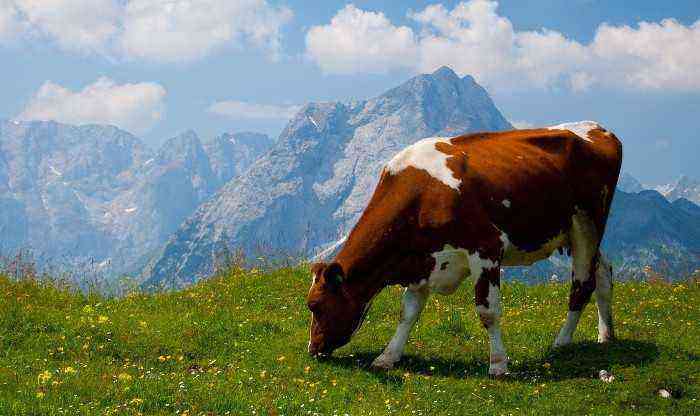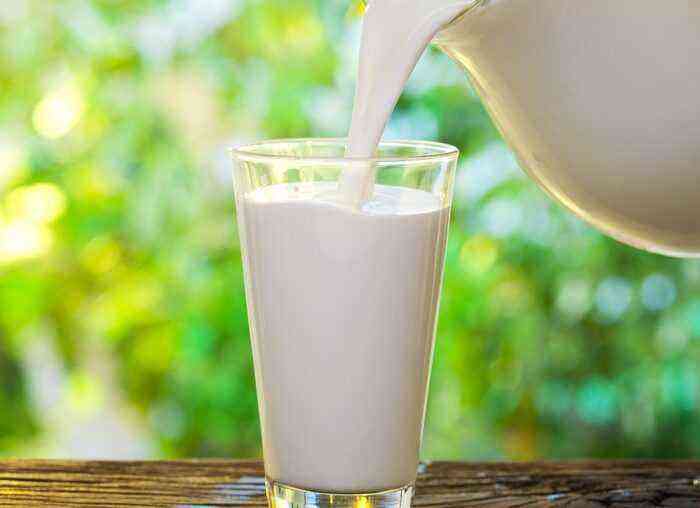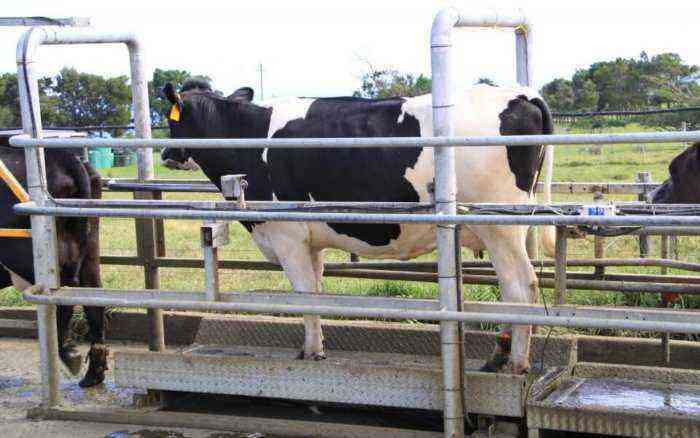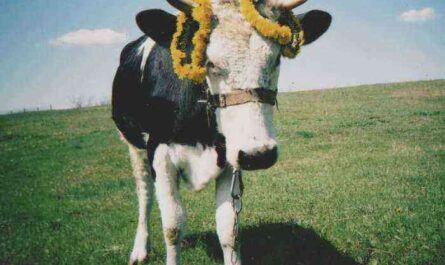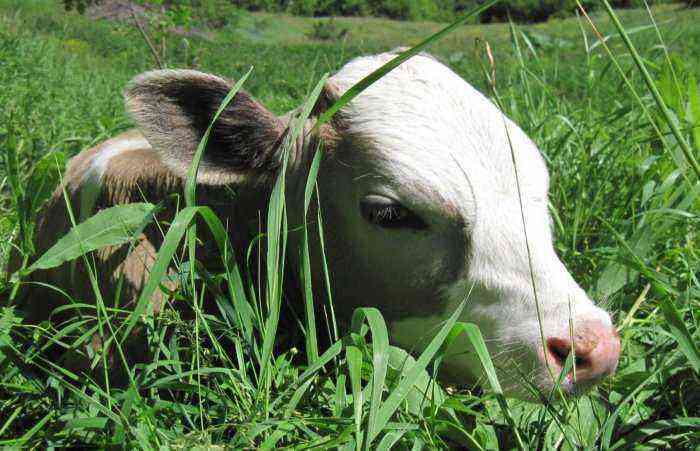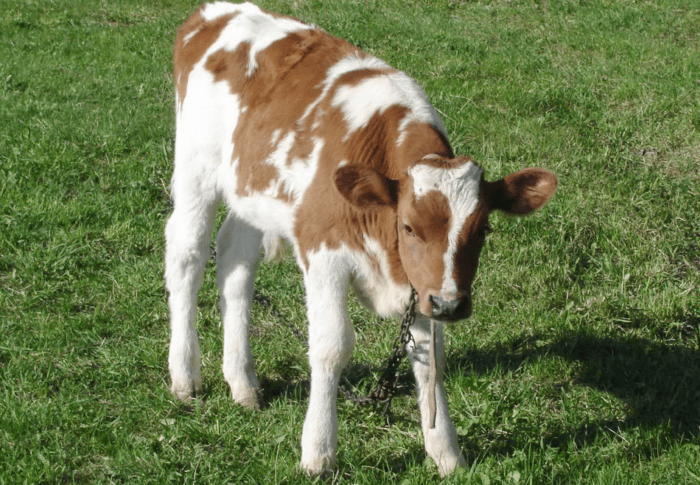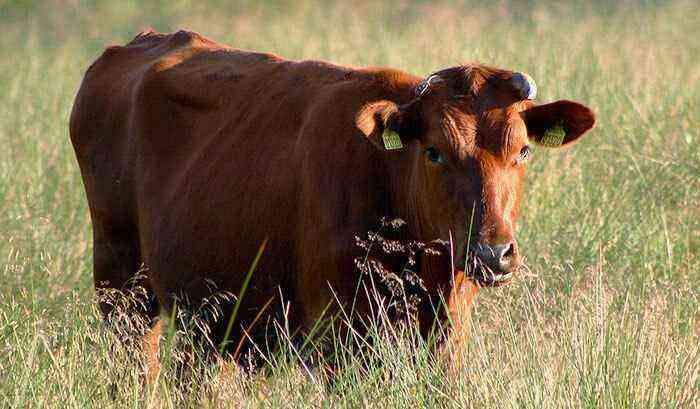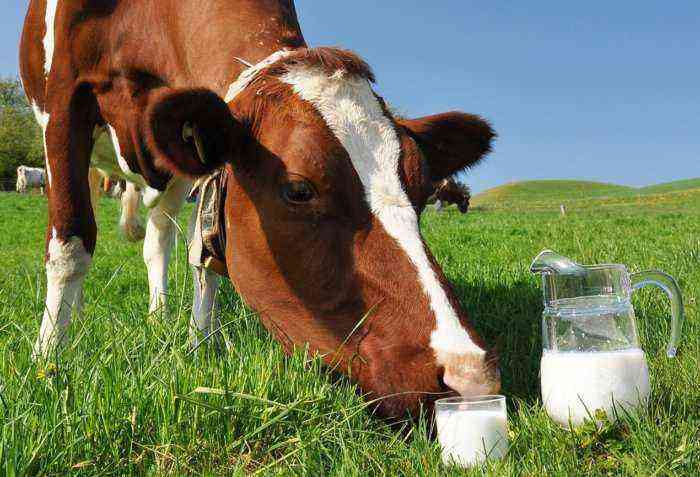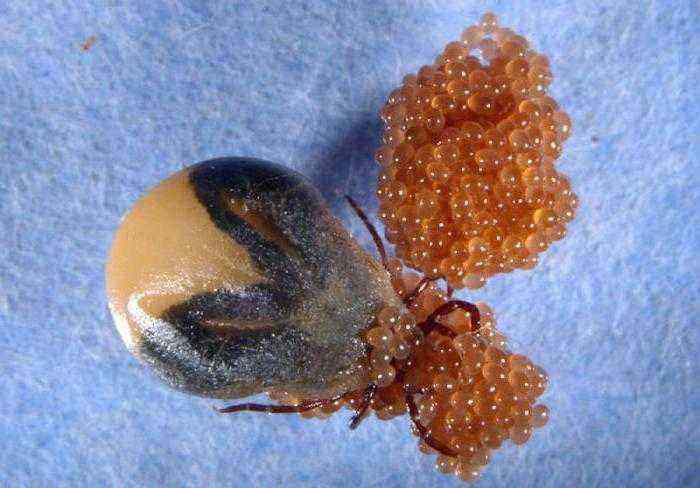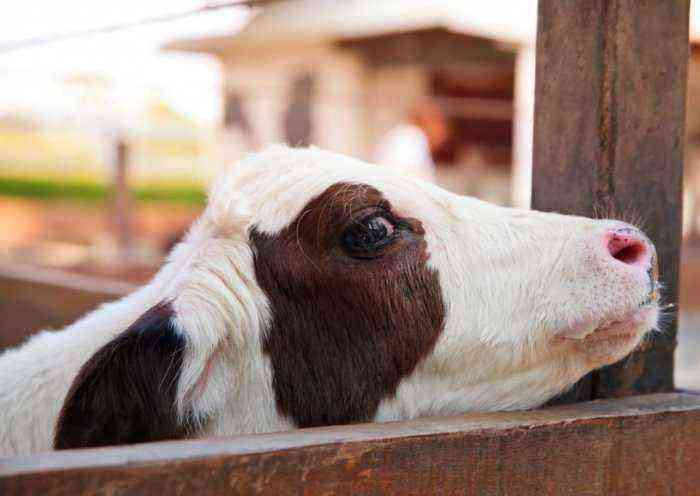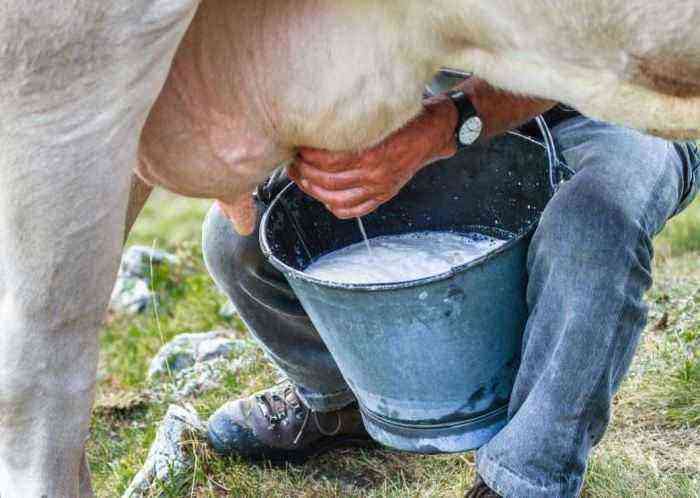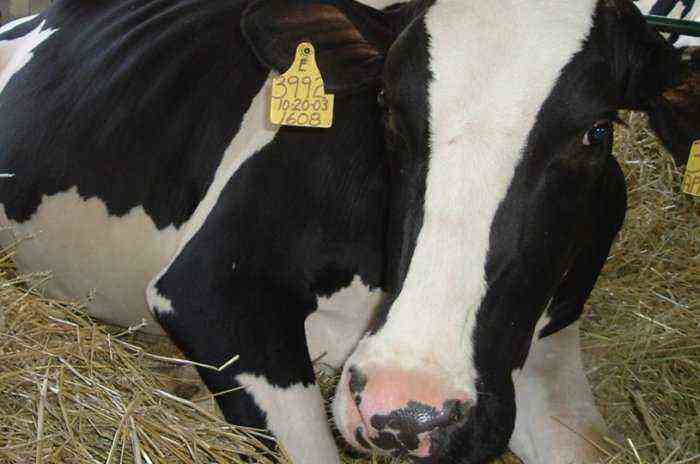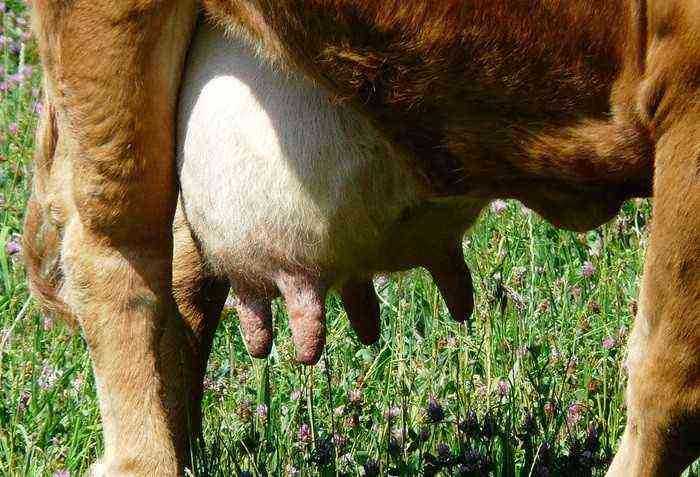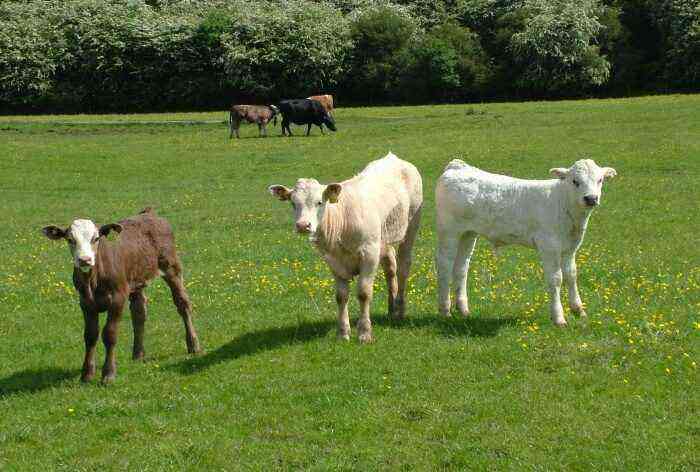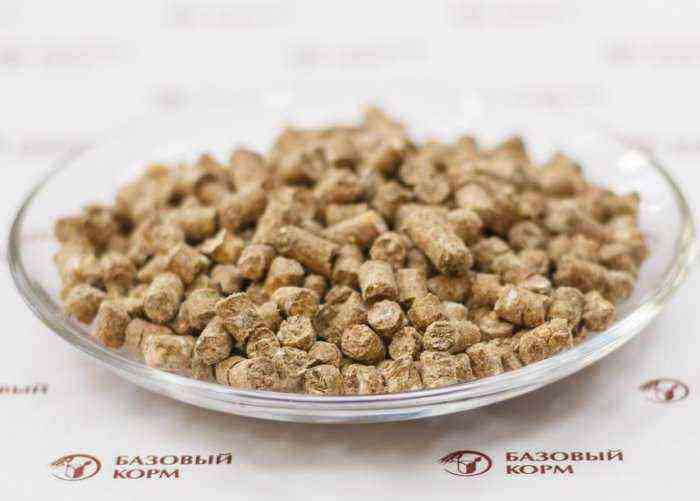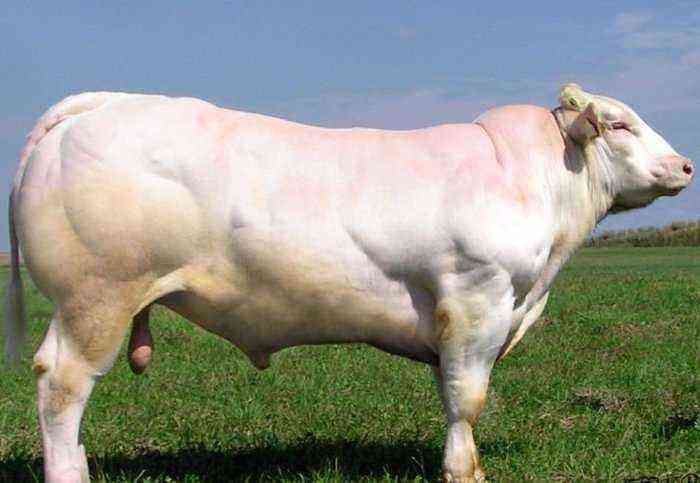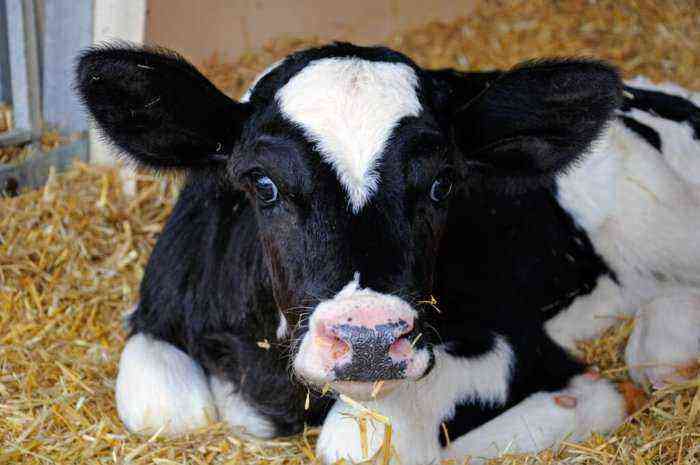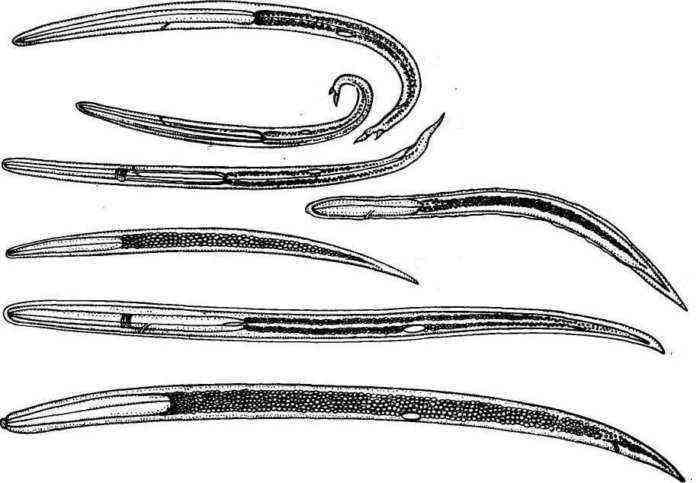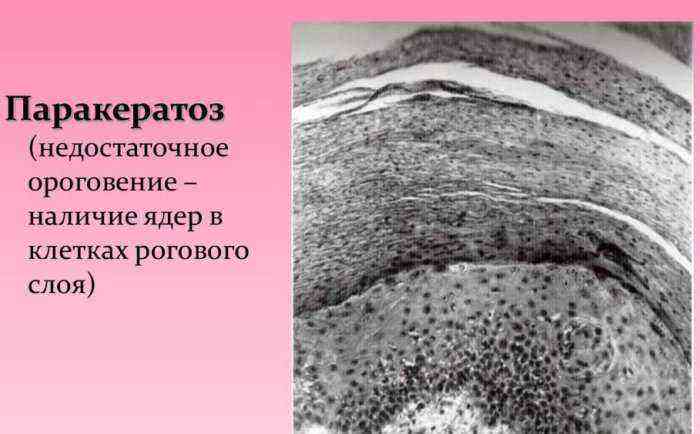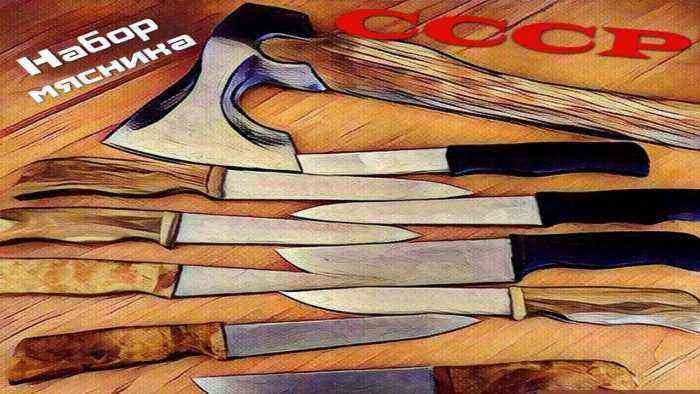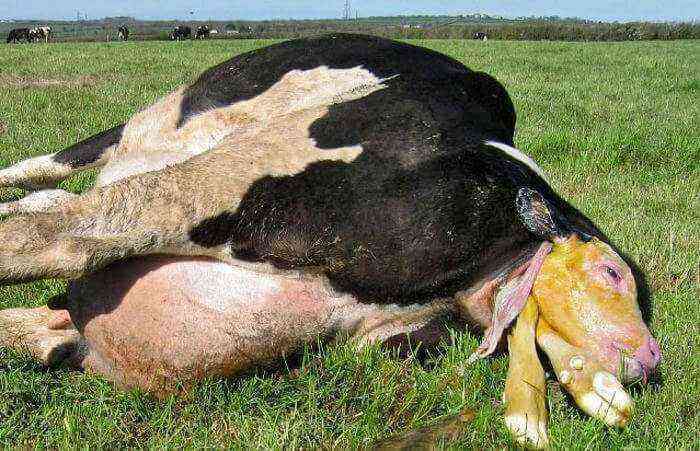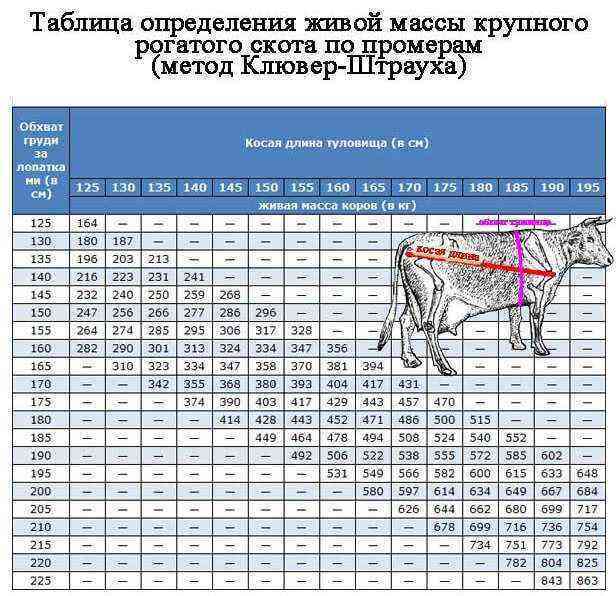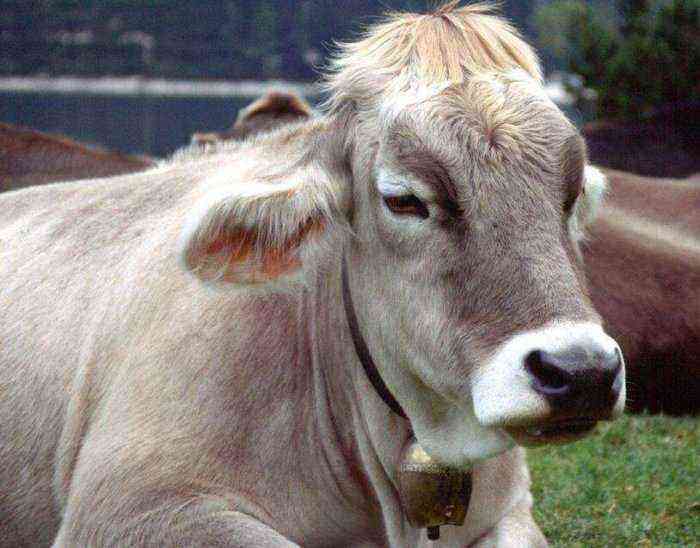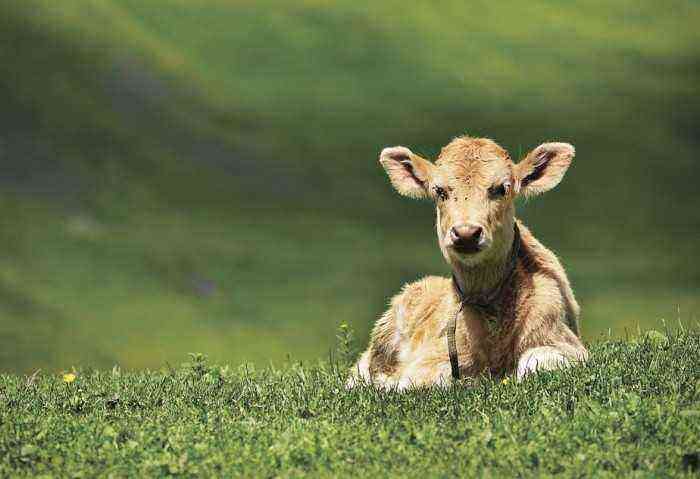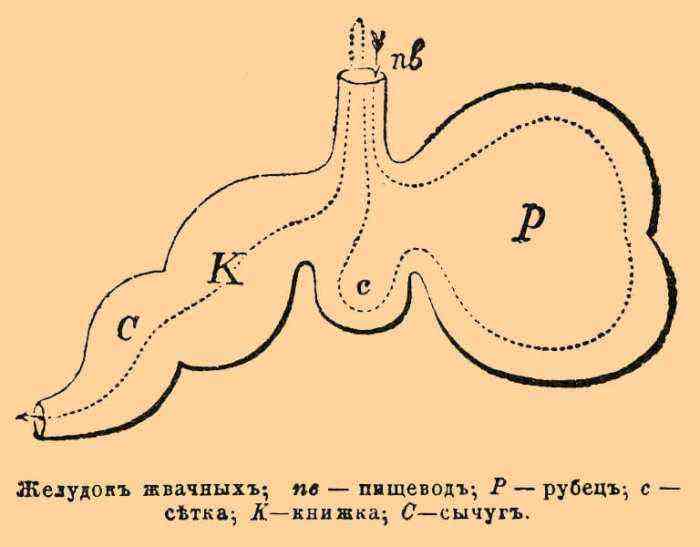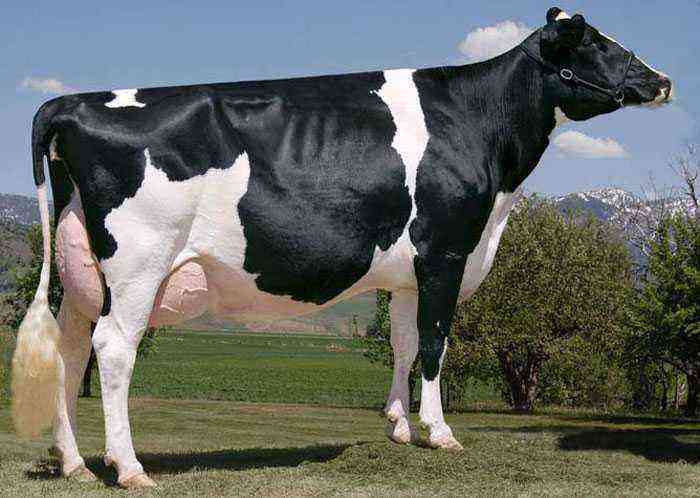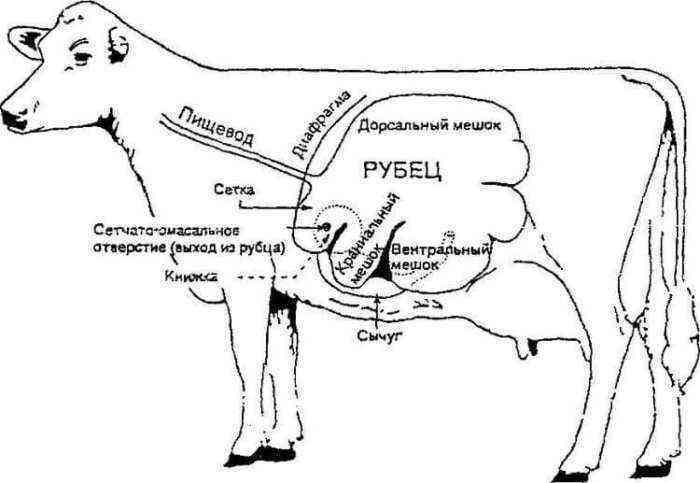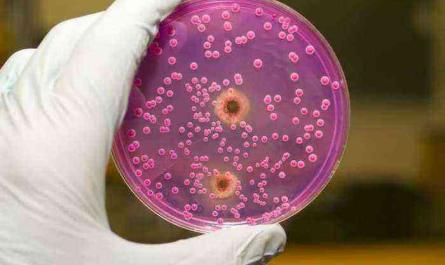The health of the baby and its productivity in the future directly depend on how properly organized the feeding of calves from birth to 3 months. Compliance with the main points of feeding will provide the body of the young with all the necessary nutrients, minerals and energy. As a result, the baby has large daily gains, and strong immunity is also formed.
Calf feeding
Features of feeding newborn calves
Proper feeding of the calf should be given attention from the first hours of his life. In the first few days after birth, there are practically no immune bodies in the body of newborns. As a result, any infection or bacteria can cause irreparable harm to the baby. To avoid this, living creatures must be planted as soon as possible to the mother for feeding with colostrum.
Milking with colostrum
Feeding calves with colostrum is practiced in the first 7-10 days of his life. Such food contains all the necessary nutrients, vitamins and immune bodies that strengthen the health of the animal and provide it with protection from external negative influences. Colostrum differs from regular cow’s milk by:
- 2 times more dry matter, which increases its nutritional value;
- high fat content;
- vitamins A, C, D, E, necessary for the development of the calf, as well as several different B vitamins;
- large volumes of magnesium salt, which helps cleanse the intestines of the calf.
It is necessary to feed the baby with colostrum already in the first hour after his birth. If this moment is neglected, the baby will begin to suck on the objects surrounding him and the elements of the stall. Often because of this, bacteria and viruses enter the body, which cause diseases.
The first feeding of the calf with colostrum is desirable to be carried out already 30 minutes after its birth and wiping with straw, and for this, at least 1,5-2 liters of liquid are used. Ideally, its volume should be from 4 to 6% of the mass of the cub.
For the next 4 days, the baby is fed 6 times a day, while the feeding rate remains the same. The total amount of food fed for young animals per day is 8 liters. Starting from the 5th day, the number of meals is gradually reduced, bringing them to 10 by the 3th day.
Colostrum should not be introduced into the diet cold. Its temperature before feeding is raised to 36-38 degrees. The calf is fed with colostrum either directly from the cow or with the help of teat drinkers. In the second case, young animals must be fed immediately after milking, since every hour the amount of nutrients in colostrum decreases and the percentage of bacteria that affect the functioning of the digestive tract increases.
What to do if there is no colostrum?
Sometimes breeders are faced with the fact that a cow’s colostrum disappears. The reason for this can be various diseases, stress, improperly constructed feeding. In this case, it is replaced with a specially prepared mixture, which, in terms of nutritional value and composition, is as similar as possible to the original.
This substitute includes:
- 1 liter of cow’s milk (it is necessary to take fresh);
- 3 chicken eggs;
- 15 g of fish oil (it is better to use fortified);
- 5 g table salt.
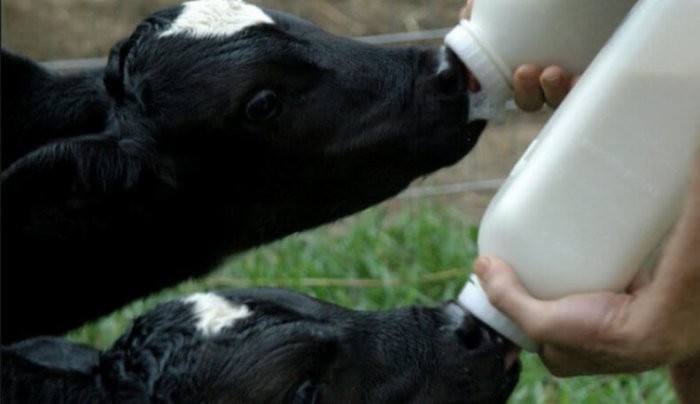
Feeding calves at 3 months
Before serving, all components are mixed and heated to the desired temperature. Newborn babies are fed artificial colostrum in its pure form. After several feedings and then, the substitute is diluted with boiled water in a ratio of 1:1. The approximate norm of such food is 1 liter per head.
When should you start introducing your calf to other foods?
The basis of the calf’s diet in the first few weeks of life is colostrum and milk. But in parallel with feeding such products, other components should also be introduced into his diet.
Starting from the 3rd day after the birth of the calf, in addition to milk, it is provided with a plentiful amount of drink. Boiled water in a volume of 1 liter is soldered to the baby 2 hours after feeding.
On the 10th day, in addition to the main diet, semolina porridge is introduced, which is prepared based on the proportion of 4 tablespoons of cereal per 3 liters of fresh, boiled milk. Also, from the 10th day, small portions of crushed hay of legumes and compound feed are introduced into the menu. This allows you to quickly accustom the baby’s digestive system to cope with such food. Hay should be given out dried, and the stems should be well leafy.
Diet for monthly calves
When determining how to feed a monthly calf, it should be remembered that milk alone is no longer enough for its full growth and development. During this period, the amount of fed hay is increased, but it is given along with succulent feed, which includes:
- peeling and small pieces of apple;
- peeling potatoes;
- carrot;
- fodder beets.
Before serving, these components are thoroughly crushed and mixed with hay. Many breeders, in addition to the peel of the potato, also feed the root crop itself. But it is advisable to give it to young animals from 1,5 months of age in an amount of not more than 300 g.
At the age of one month, the offspring also continue to be accustomed to concentrated feed. In this regard, in addition to special compound feed, oatmeal jelly is also used. It is prepared as follows:
- 80 g of oatmeal is poured into a suitable metal container.
- There also pour 1 liter of boiling water.
- For 8-10 minutes, the mixture is thoroughly stirred and allowed to thicken slightly.
You can feed calves with kissel from the 10th day of life. But if at this time the recommended norm is 100-200 g, then after a month it is increased to 1,2-2,5 kg.
Reference. You can also dilute the calf menu in reverse. It is given in the amount of 4-6 liters per head.
To fill the needs of the baby’s body in vitamins and minerals, either special ready-made complexes or hand-made mixtures are used. In the second case, 1 g of meat and bone meal, 10 g of table salt and 10 g of chalk are diluted in boiled milk (10 l). Such an additive will provide the growing body with calcium, phosphorus, as well as some important vitamins.
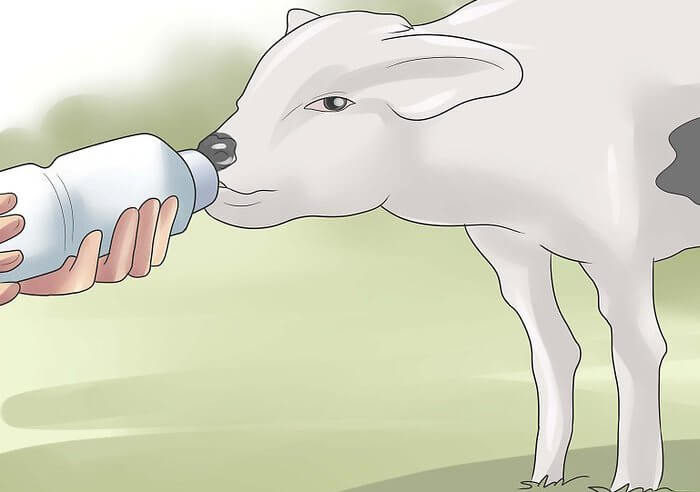
Formula feeding the calf
During feeding of livestock, attention should be paid to the fact that missing milk, particles of dirt, food that have undergone rotting or mold should not get into the feeders. All this can seriously harm the calf and even lead to his death.
Nutrition at 2 months
Already from the beginning of the second month of life, the calf is gradually transferred to reverse, partially or completely replacing whole milk with it. The same feeding scheme is used in feeding two-month-old babies.
Also, from the second month of life of the offspring in his diet, the volumes of vegetables given are increased. Before serving, they are thoroughly washed and crushed.
Attention! It is necessary to increase the norms of vegetables and introduce new components into the diet little by little, since individual intolerance can be traced in some individuals.
The amount of hay is gradually increased to 1,5 kg. Choose herbs with thin stems and lots of leaves. It is placed in the feeders, having previously been soaked in a salt solution.
From the second month, green grass is also allowed to be eaten by young animals. First, it is given in a dried form, and after accustoming it, it is fed fresh. The norm of such food is 2 kg per day. Supplement the menu with concentrates, which include grain, cake and bran.
Feeding at 3 months and older
On average, after three months, the diet of young animals does not actually change, only the amount of feeding is increased. The menu of one calf per day includes:
- high-quality hay – at least 1,5 kg;
- silage – 1,5 kg;
- root crops – 1,5 kg;
- combined feed or other concentrates – 1 kg;
- turn – 5 liters.
The specified diet may vary depending on the conditions of detention. So, in the summer, the entire volume of hay is replaced with fresh vegetation from pastures. Also, for more variety in the menu, vegetables and hay can be alternated by day.
In the case of the implementation of pasture keeping of livestock, young animals are transferred to greenery gradually. At the beginning of 4 months, the rate of grass is 4 kg. It is slowly increased to 10 kg. After 4 months of life, the calf eats more than 13 kg of vegetation per day, and starting from the 6th, the volume of green fodder is increased to 20 kg.
If the calf eats the indicated norm of pasture greens per day, then the total volumes of concentrated feed and vegetables can be reduced.
After 6 months, the diet changes and has the following daily allowances:
- hay or fresh grass in unlimited quantities (until the animal is full);
- combined feed – about 5 kg;
- washed and chopped vegetables – 8 kg.

Fresh grass for a 6 month old calf
Important! Be sure to supplement the main diet with a mineral supplement. Such complexes should include phosphorus, calcium, manganese, a sufficient amount of iodine. They will contribute to the growth of living creatures and strengthen its health.
Drinking bowls with clean water should be installed in the places of keeping and grazing calves. It is not worth using drinking from natural stagnant reservoirs for feeding young animals. This fluid can contain bacteria and parasite eggs.
Vitamin and mineral supplements
When raising calves from the moment of calving, breeders can often observe a picture of how young animals begin to gnaw and suck on the walls of the corral. Also, babies often try to chew straw. This phenomenon is a pronounced sign that the young stock lacks mineral elements and vitamins in the diet.
You can correct the situation using special mineral-vitamin complexes that correspond to the specific age of the calf. Picking them up on your own is quite risky, it is better to use the services of a veterinarian.
Also, to maintain the mineral balance in the body of the calf, apply:
- from 6 to 10 days, a little honey, salt, chalk and oatmeal are mixed into the milk;
- from day 10, a small amount of mashed potatoes in milk is introduced into the diet;
- from 2 weeks of age, calves are given boiled apples and carrots;
- from 2 months, raw potatoes are introduced into the menu.
Be sure to use salt and bone, meat and bone meal in small volumes in feeding.
Proper feeding of calves from birth to six months is the key to their health. Correspondence of nutrients and vitamins supplied with food to the needs of the body ensures the intensive growth of young animals and the future productivity of livestock. But the correct construction of the diet is possible only if you become familiar with the basic rules and nuances of feeding calves.

